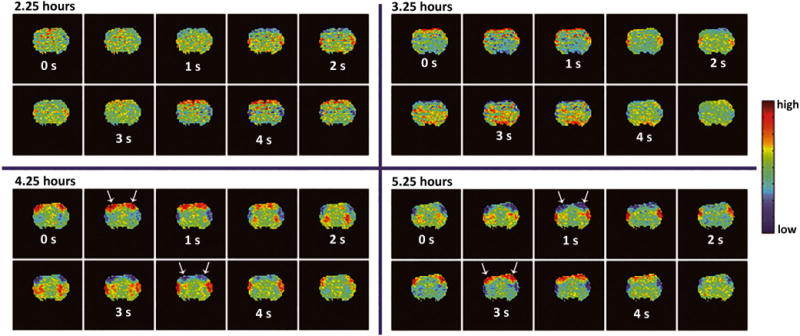Figure 7.

Spatiotemporal dynamic evolution. Each of the four windows contains data from a single coronal brain slice containing the primary motor and S1 cortical brain regions. Spatiotemporal dynamic templates were generated from four time points of a single rat (2.25 h, 3.25 h, 4.25 h, and 5.25 h) from the long isoflurane group. These templates indicate repeating patterns of BOLD activity occurring in space and time. Detailed information regarding the formation of spatiotemporal dynamic templates can be found in the work of Majeed et al. (29). The top row indicates the state where no visible dynamics are present, while the bottom row shows the presence of coordinated cortical spatiotemporal dynamics. For this rat (long isoflurane, rat 5; chosen for display because of its similar timing to spatiotemporal group analysis for spatiotemporal dynamic data), spatiotemporal dynamics began at 3.75 h. High correlation values located on the edge of the brain at the 2.25 and 3.25 h time points are likely due to slight motion or breathing effects, and are present in the template as they represent the only pattern in that time point data that can be averaged together by the spatiotemporal dynamic algorithm.
